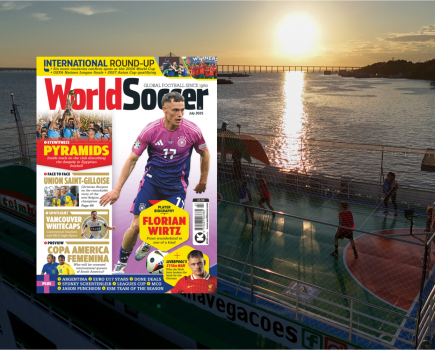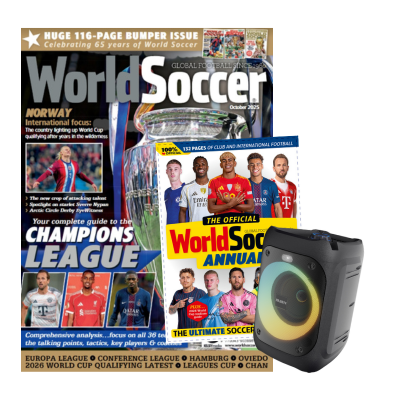Brazil will travel to South Africa next summer as favourites to win a sixth World Cup.
By Tim Vickery in Rio de Janeiro
Mission accomplished, Argentina beaten and World Cup qualification achieved. Brazil coach Dunga was reminded, however, that there were times when the press and public had called for his head.
“They weren’t only after my head,” he replied. “It was head, body and soul as well.
“There were some unpleasant years. Everything that happened – if there were economic problems, if it was raining – it was all Dunga’s fault. But a guy with no experience has won the Copa America, the Confederations Cup, put together a team in six days and come back from the Olympics with a medal, and now qualified for the World Cup three rounds early. Of course I’m very happy, although some people around here might not be.”
It was the tone of a man with a lot to get off his chest. His appointment after the last World Cup was widely seen as a stopgap. Dunga was a poor man’s Scolari: given the job while the real thing was unavailable. He was merely keeping the seat warm.
Now, 19 games unbeaten, the last 11 of them victories (10 and five respectively in World Cup qualification), Dunga is entitled to gloat. Along the way he has fashioned a team to be feared, a ruthless, winning machine who take the field full of confidence and thoroughly aware of their game plan.
It could have turned out differently – there were a couple of moments when Dunga might have fallen – but, like all good generals, along with competence and commitment, he was blessed with luck when he needed it.
Firstly in the 2007 Copa America. Brazil beat Argentina 3-0 in the Final, but had been fortunate to hold Uruguay to a draw in the semis. In the penalty shoot-out it looked all over. Pablo Garcia, one of Uruguay’s most experienced and technically accomplished players, stepped up to take his kick. Score, and Brazil were out. Instead he hit a post. Three inches to the keeper’s right and Brazil would have flown home as failures – with the strong chance of a new coach leading them into the World Cup qualifiers.
Then, a year later, Brazil suffered “black June” – a historic defeat by Venezuela in a friendly, well beaten by Paraguay in World Cup qualification and then slightly fortunate to escape with a goalless draw from the home game with Argentina.
“Goodbye Dunga,” chanted the crowd in Belo Horizonte. It seemed then that the only thing that could save his job was the Olympic gold medal. It is a title Brazil had never won – and they are still waiting as Dunga’s side went down 3-0 to Argentina in the semi-final. But here came his second stroke of luck: World Cup qualification resumed straight afterwards, so there was no time for a new man to take over.
A 3-0 win away to Chile staved off disaster – but things were to get worse before they got better. A 0-0 draw at home to Bolivia was a low point in the history of the national team, and the side were also held by Colombia in their next home match. It meant Brazil had racked up three successive goalless draws in front of their own fans with hardly a chance created. “Goodbye Dunga” rang out again.
But in such adversity a winning formula was found – and perhaps Dunga ended up at a point he never imagined when he took over.
Critical of Parreira
Working for the Brazilian media during the last World Cup – presumably unaware that he would soon take over – Dunga was critical of Carlos Alberto Parreira’s Brazil side. He had been Parreira’s captain in the 1994 World Cup win, and was surprised that the 2006 side were so deficient in an aspect in which Parreira’s teams are traditionally strong: controlled possession.
Indeed, in the early stages of his reign Dunga gave opportunities for elegant midfielder Dudu Cearense, currently of Olympiakos, to improve this area of the team’s play. Dudu did not perform well and was soon discarded. Instead, Dunga settled on a 4-2-3-1 formation, with a line of Ronaldinho, Kaka and Robinho operating in support of lone striker Luis Fabiano.
It never really convinced. There was a sense that the three of them got in each other’s way. So there was a switch, which essentially meant that Ronaldinho dropped out – Dunga had run out patience with his lack of fitness – and a right-sided midfielder, usually Elano, came in.
Friendlies against Portugal (in Brazil) and Italy (in London) were fundamental in bedding in the new model. Against packed defences, the fearsome Maicon would be given licence to burst forward. Elano was there to cover if necessary, and Gilberto Silva could also drop back from midfield and slot across like a third centre-back if required.
Kaka and Robinho now had more space in which to work – emphasised still further by the collective tactic of dropping deep to draw the opposition forward, and then springing at lightning pace and with dazzling skill.
In June’s Confederations Cup in South Africa, Brazil gave ample demonstration of the force of their counter-attack. They have grown entitled to believe that a corner for the opposition represents a goalscoring opportunity for themselves.
Part two of Brazil’s renaissance will be posted tomorrow






